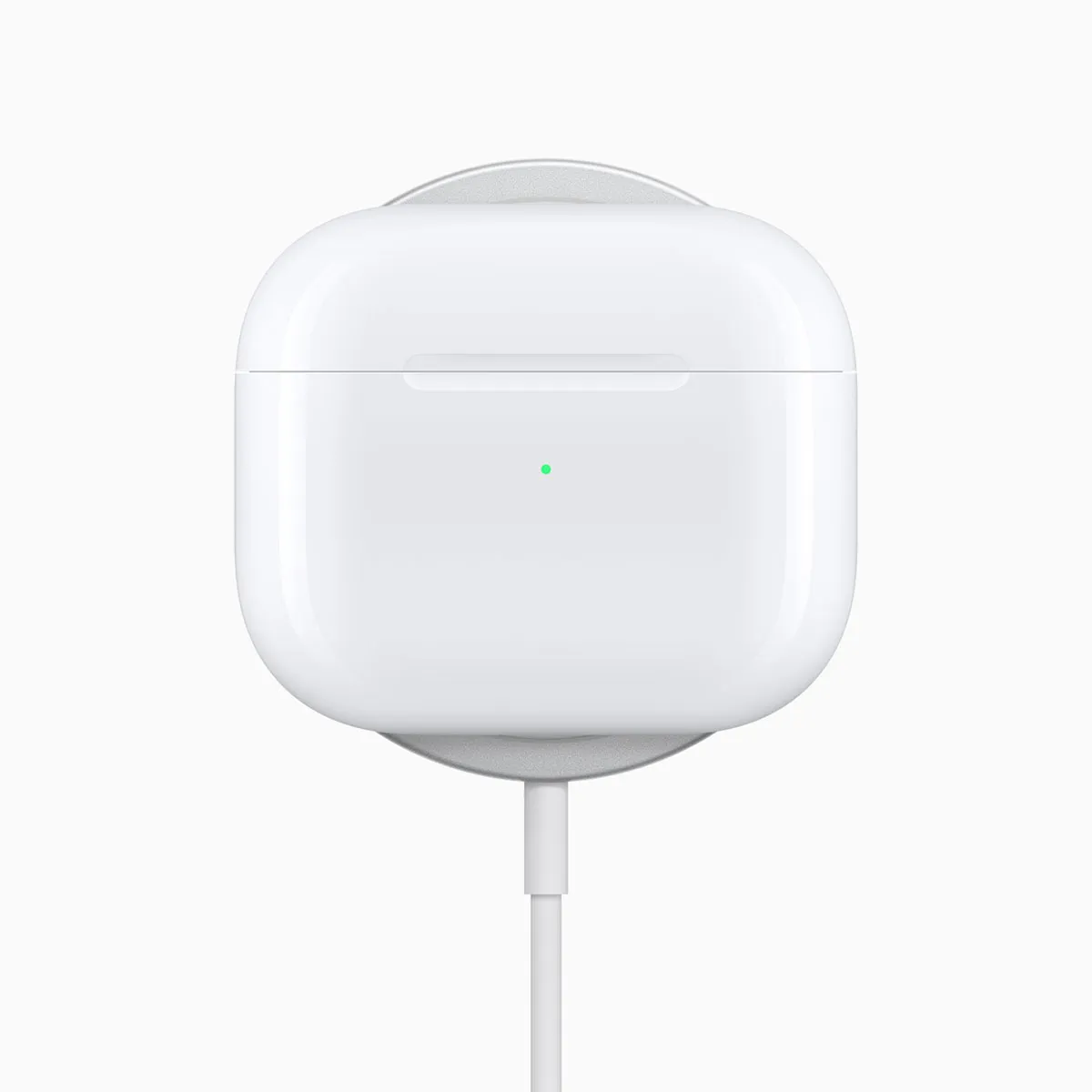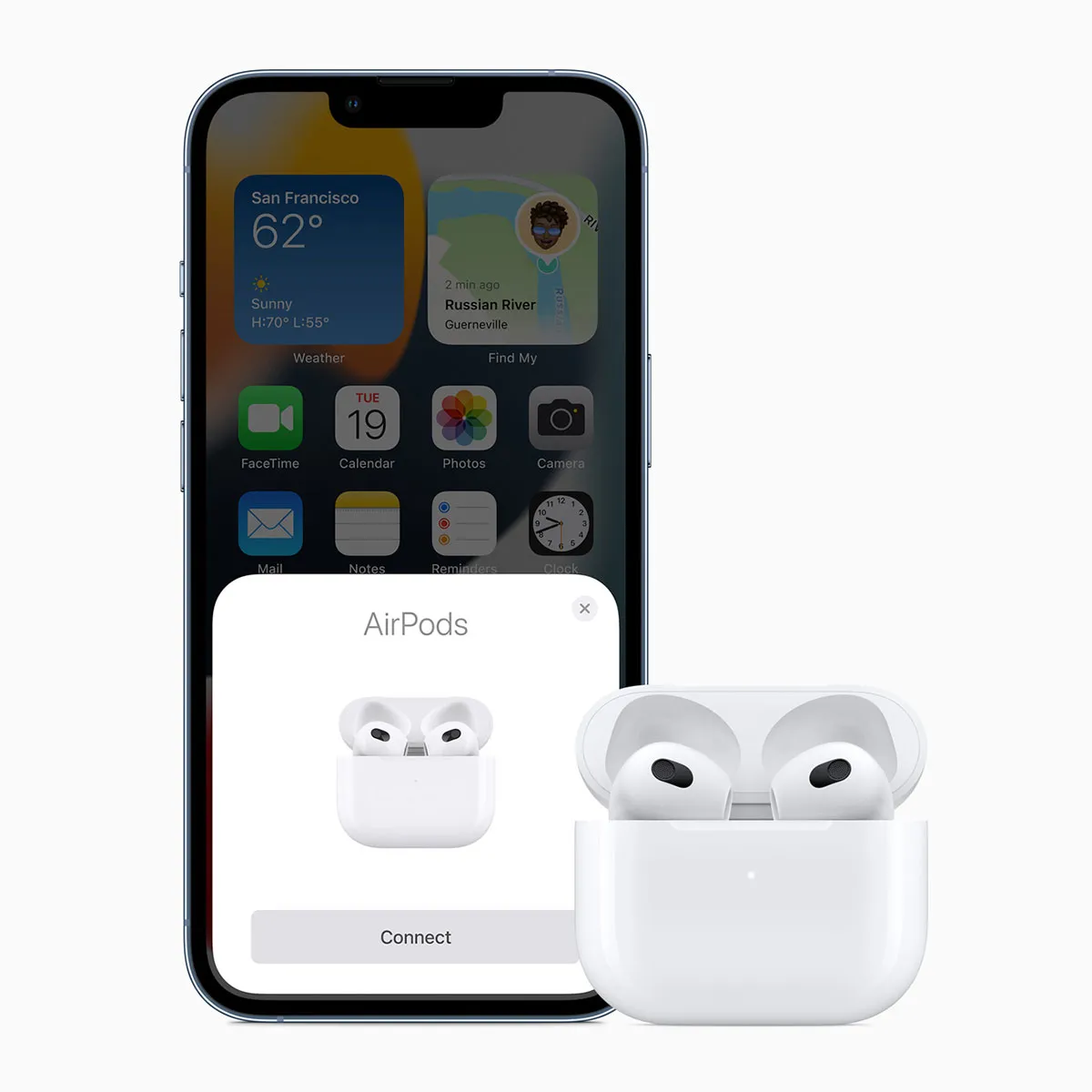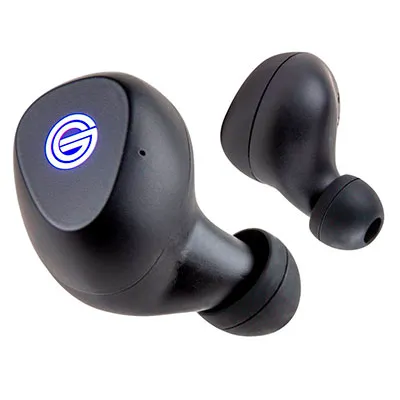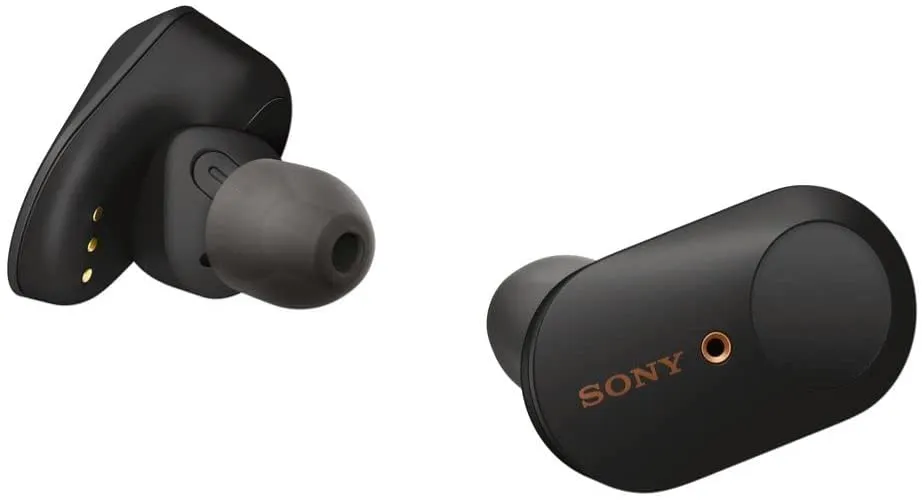Apple’s new AirPods defy expectations. They’re tiny, but they produce a big, cinematic sound. They’re sleek and slippery to the touch, and yet they seem to never fall out of your ears. Plus they’re cheaper than the Pro model, but offer comparable audio. In fact, if you don’t need noise-cancelling, we’d wager you might even prefer these.
Unlike most other earphones, which leave you with slightly sore lugs after a few hours of use, the AirPods’ features and design mean you can practically wear them all day, flicking between calls and music, one device to another. But, as ever, to get the most out the AirPods they need to be married to the company’s ecosystem.
If you’re Android-based, you probably want to consider some great wireless earbud options from the likes of Sony and Grady (which we discuss below) that offer a similar level of audio quality.

Features
Setting up AirPods to work with your iPhone is as simple as putting the two next to each other (and making sure Bluetooth is on). From there the AirPods will be introduced to any other Apple tech associated with your account. It’s seamless and effortless.
The ability to flit between devices, from a phone to a laptop for example, without having to mess around with Bluetooth settings by clicking the play button on whatever you’re using is a trick that’s consistently impressive.
There’s an implausibly small touch-sensitive panel – Apple calls it a “force sensor” – on the right-hand AirPod’s stem from which you can pause, play and skip tracks. Good in theory, but in practice it required a more delicate touch than our paws could deliver. We’re not entirely sure why people who make earphones keep trying to put touch-sensitive controls on tiny earphones. That said, skin sensors on the AirPods will notice when you take them out and pause your music, which is useful.
IPX4 Waterproofing is a welcome addition, which defends from splashes from all directions. This means the AirPods will handle the rain or a workout, but not a dip in the bath.
The case and battery together offer 30 hours of listening before you need to plug them into a charger, and the earphones themselves will last six hours of play time before you need to put them back into the case. Both of these figures feel about right from our experience. A neat trick, though, is that the case is able to fast charge the earphones if they’re running low: five minutes of charge can provide an additional hour of listening. As long as the case is charged, you’ll never find yourself caught short.

Design
There’s no ear tip on these AirPods. On other earphones (including the AirPods Pro) these rubberised tips are usually useful for ensuring your earphones are a good fit and that they isolate your ear canal from the outside world, shutting out any noise that might interfere with the audio quality.
To our surprise, it’s a welcome omission. We found it more comfortable to use over long periods since the ear tips tend to put pressure on your inner ear. It’s probably safer too, as there’s less air pressure heading towards your eardrum. In practice, it makes the AirPods sound somewhere between a traditional pair of earphones and an open-backed headphone, it feels like there’s more room for the sound to expand into.
The fit also seems to work well at keeping the earphones actually in your ear (at least for my ears – everyone’s will be different). The bit that goes into your ear has a wider circumference than most and the weight is distributed in such a way that they seem to hang on your ear, rather than cling on for dear life.

Audio Quality
Apple has thrown all of its newest technological innovations into this tiny frame. The AirPods are now equipped with spatial audio and Adaptive EQ. The former simulates surround sound and the latter listens in to what going on inside your ear and optimises accordingly.
The sum effect is an involving, rich audio experience that will make you reconsider what kind of sound you can get out of earphones. Unusually for Apple, who tend to come in at the premium end of pricing, these actually sound better than other earphones at similar and higher prices.
With a small form factor, earphones typically tend to shrink your music, compressing the frequencies so that high-pitched tones sound flimsy while bassy notes become noisy. That’s not the case here. Michael Kiwanuka’s gravelly but gossamer tones feel delicate and life-like, meanwhile Flying Lotus’s classic album Cosmogramma sounds sharp with crisp, distinct bass and detailed high notes. Occasionally, at higher volumes, Flying Lotus’s noisy, complicated electronica can stretch the limit of what the AirPods can do.
Watching a movie is similarly impressive. Spatial audio does a great job of simulating surround sound and deals well with the cacophony of an action movie. During a particularly noisy sequence, you can feel like you’re at the limit of what you can get out of a pair of earphones, but we’d just suggest going for on-ear headphones if cinema is your thing.
Calls are great too, especially out and about as a collective of microphones on the earbuds listen in for your voice and make a special effort to eliminate wind noise. There’s HD voice if you’re calling another Apple device over FaceTime, which is so clear it’s almost eerie – it’s as though your caller is in the room.
Verdict
These are among the best earphones we’ve tested. There’s only two other options we’ve tried that are comparable: the Sony WF-1000XM3s (and presumably their upgrades) and Grado’s GT220. Both would be great options if you’re using Android, or you’re looking for something a bit more ‘Hi-Fi’.
The AirPods, however, edge both in terms of features and usability when hooked into an Apple ecosystem. The audio quality is sharp and clear, and spatial audio is a great addition when paired with music or movies that supports the audio format. Plus they’re hugely comfortable to wear – our ears didn’t get sore after 4 hours playback – which can’t be said for the competitors out there. A brilliant all-round performer.
Best AirPod alternatives
Grado GT220

These wireless earbuds are the perfect alternative if all you care about is music. There’s no app, noise-cancelling or EQ settings to mess around with here, Grado has purely focused on comfort and audio clarity and excelled at both. In terms of pure musicality and warmth, they’re a step-up in our humble opinion, from the Airpods.
Guide price: £250
Sony WF-1000XM3

If you’re looking for a few more features than the Grado earphones offer, Sony is the best place to go looking. The Sony WF-1000XM3s throw noise-cancelling and touch controls into the mix and since they’re a bit older, there are some great deals out there for them. The sound is warm, rich and on a par with the AirPods.
Guide price: £129
Sony WF-1000XM4

If you’ve got a bit more to spend, this model is an upgrade from the pair mentioned above. Sony has levelled up all the tech inside these earphones – the DAC, the audio processor and amplifier – to provide what many consider the standard-bearer for wireless earphones.
Guide price: £199
Nothing Ear(1)

For £99, these ultra-cool earbuds with noise-cancelling are hard to look past. We love the design, there are lots of features to play with via the app and they offer 34 hours of battery life. They don’t sound as clear or as rich as the other earphones here, but they’re undeniably great value for money.
Guide price: £99
Read more headphone reviews:
- Diesel True Wireless Earbuds: Looks sleek, but a bit awkward to use
- Apple AirPods Max review: Why these headphones are worth £549
While you're here, why not check out our roundup of the best MacBook accessories on the market?
